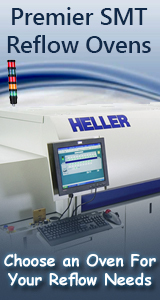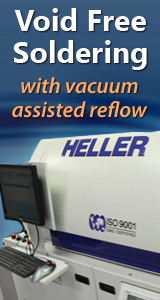Printed Circuit Board Assembly & PCB Design Forum
SMT electronics assembly manufacturing forum.
- SMTnet
- »
- Electronics Forum
- »
- Reflow
Reflow
Views: 17950
![]() I want to know about reflow profile in detail..
...
- Sep 16, 2017
by
S.l
I want to know about reflow profile in detail..
...
- Sep 16, 2017
by
S.l
![]()
![]()
![]() What is the meaning of process window
...
- Oct 09, 2017
by
S.l
What is the meaning of process window
...
- Oct 09, 2017
by
S.l
![]()
![]()
![]() It is a window in which you look thru (all reflow ovens have...
- Oct 09, 2017
by
charliem
It is a window in which you look thru (all reflow ovens have...
- Oct 09, 2017
by
charliem
![]()
![]()
![]() developing a reflow profile is about balancing two variables...
- Oct 09, 2017
by
dwl
developing a reflow profile is about balancing two variables...
- Oct 09, 2017
by
dwl
![]()
![]()
![]() Good to know that trolls are everywhere.
...
- Oct 09, 2017
by
tombstonesmt
Good to know that trolls are everywhere.
...
- Oct 09, 2017
by
tombstonesmt
![]()
![]()
![]() My response could be seen as "trolling", if so I apologize. ...
- Oct 10, 2017
by
charliem
My response could be seen as "trolling", if so I apologize. ...
- Oct 10, 2017
by
charliem
![]()
![]()
![]() Then please tell me the process.. Actually
...
- Oct 10, 2017
by
S.l
Then please tell me the process.. Actually
...
- Oct 10, 2017
by
S.l
![]()
![]()
![]() Here is a link to a reflow profile: ...
- Oct 10, 2017
by
charliem
Here is a link to a reflow profile: ...
- Oct 10, 2017
by
charliem
![]()
![]()
![]() I want to know about solder paste ( Inside solder.. How its ...
- Oct 10, 2017
by
S.l
I want to know about solder paste ( Inside solder.. How its ...
- Oct 10, 2017
by
S.l
![]()
![]()
![]() Don't beat yourself up. I liked your response - it totally c...
- Oct 10, 2017
by
Evtimov
Don't beat yourself up. I liked your response - it totally c...
- Oct 10, 2017
by
Evtimov
![]()
![]()
![]() If you don't eat your meat you can't have any pudding,
How ...
- Oct 10, 2017
by
charliem
If you don't eat your meat you can't have any pudding,
How ...
- Oct 10, 2017
by
charliem
![]()
![]()
![]() I thought the reply from charliem was funny.
I also wish...
- Oct 10, 2017
by
dwl
I thought the reply from charliem was funny.
I also wish...
- Oct 10, 2017
by
dwl
![]()
![]()
![]() yeah, me too, so we could watch them fall off chain pins
...
- Oct 11, 2017
by
bukas
yeah, me too, so we could watch them fall off chain pins
...
- Oct 11, 2017
by
bukas
![]()
![]()
![]() > It is a window in which you look thru (all reflow
>...
- Oct 11, 2017
by
Action_101
> It is a window in which you look thru (all reflow
>...
- Oct 11, 2017
by
Action_101
![]()
![]()
![]() Charlie, your response was warranted and yes you are right a...
- Oct 13, 2017
by
Sr. Tech
Charlie, your response was warranted and yes you are right a...
- Oct 13, 2017
by
Sr. Tech
![]()
![]()
![]() Years ago we had a vapor phase with a glass top. Wish I'd ha...
- Oct 13, 2017
by
Steve Thomas
Years ago we had a vapor phase with a glass top. Wish I'd ha...
- Oct 13, 2017
by
Steve Thomas
![]()
![]()
![]() People do ask to be spoon fed on here just like any forum or...
- Oct 13, 2017
by
tombstonesmt
People do ask to be spoon fed on here just like any forum or...
- Oct 13, 2017
by
tombstonesmt
![]()
![]()
![]() It has nothing to do with the question, just the way it is p...
- Oct 16, 2017
by
Evtimov
It has nothing to do with the question, just the way it is p...
- Oct 16, 2017
by
Evtimov
![]()
![]()
![]() Here, I did the footwork.
https://en.wikipedia.org/wiki/R...
- Oct 16, 2017
by
Sr. Tech
Here, I did the footwork.
https://en.wikipedia.org/wiki/R...
- Oct 16, 2017
by
Sr. Tech
![]()
- SMTnet
- »
- Electronics Forum
- »
- Reflow





.gif)

